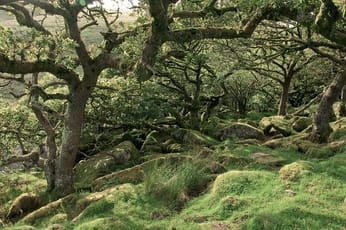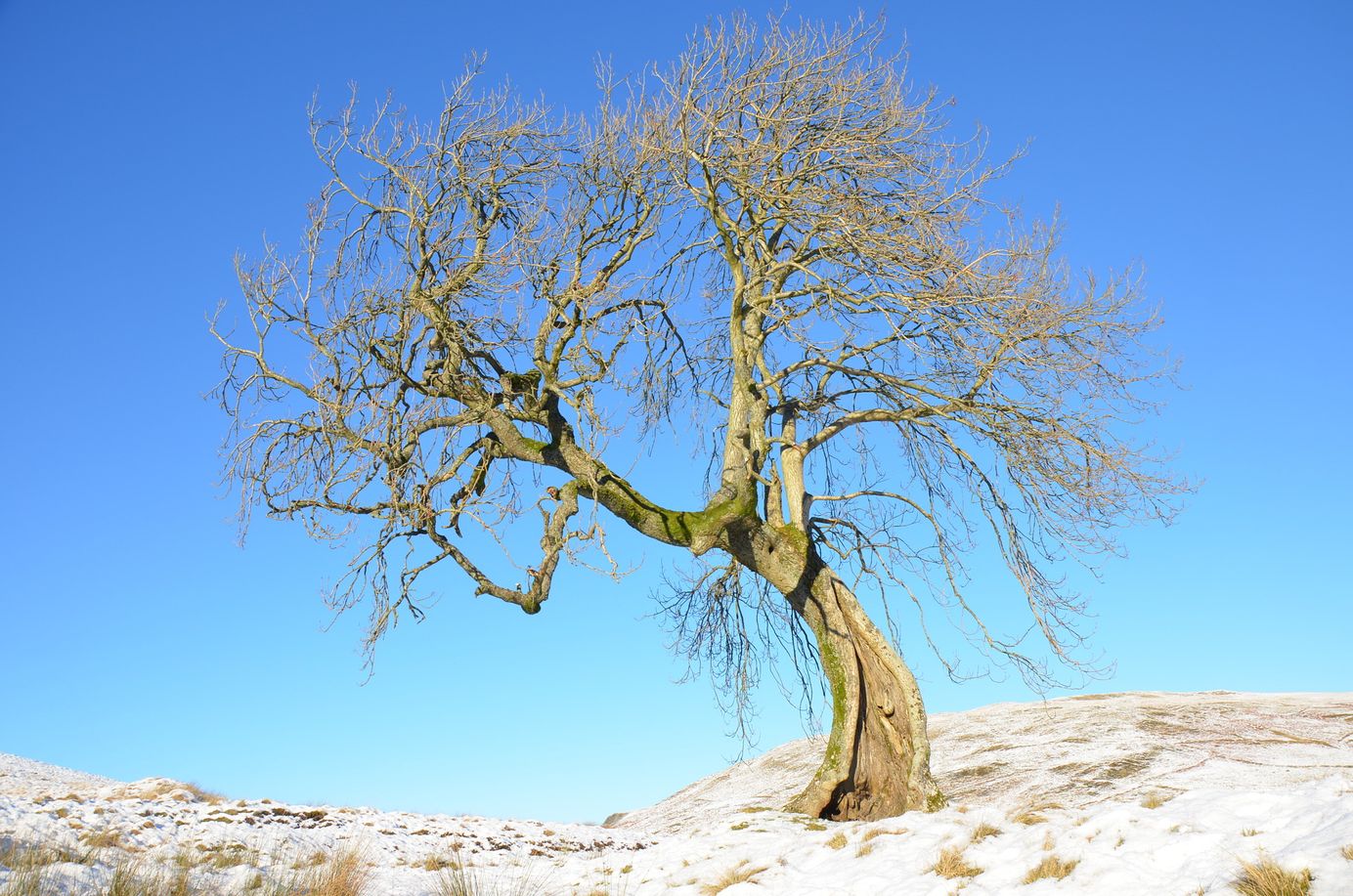
The silver lining to Britain's ash dieback crisis? More deadwood.
A fetish for tidiness has robbed Britain's woodlands of their deadwood. A devastating tree disease offers a chance to bring it back.
In the heart of the Woodland Trust’s Pound Farm site, thousands of trees are dead or dying.
A decade ago, mature ash trees dominated the semi-natural woodland stands that dot Suffolk’s rolling hills. But now some trees have snapped off at the base; others’ canopies have broken apart, and dead branches litter the woodland floor below. Those that remain have lost their once luscious green canopies, and sprouting shoots have withered and blackened. Lesions have opened up on the branches and trunks. In a few years' time, this landscape will look very different.
Pound Farm was one of the first places in the United Kingdom where authorities detected H. fraxineus in 2012. Originally from eastern Asia, the disease, also known as ‘chalara’ – or ash dieback – is now present in most parts of the United Kingdom.
The fungus overwinters on the underside of leaves in the tree’s leaf litter, and grows into tiny white cups. They burst open in summer, releasing into the air thousands of spores which can travel many kilometres. Spores stick to and penetrate ash leaves, and can infect one tree many times. Once the fungus has established itself inside the tree, it blocks the tree’s water and nutrient transport pathways, starving its limbs of nourishment – and ultimately killing the tree.
Over the next few decades, scientists expect that the UK could lose between 60% and 90% of its Ash trees, similar to the losses that have already been suffered across Europe. The Woodland Trust warns that this is the greatest threat to British trees since the Dutch Elm Disease outbreaks half a century ago, which eventually killed most of the country’s mature elms.
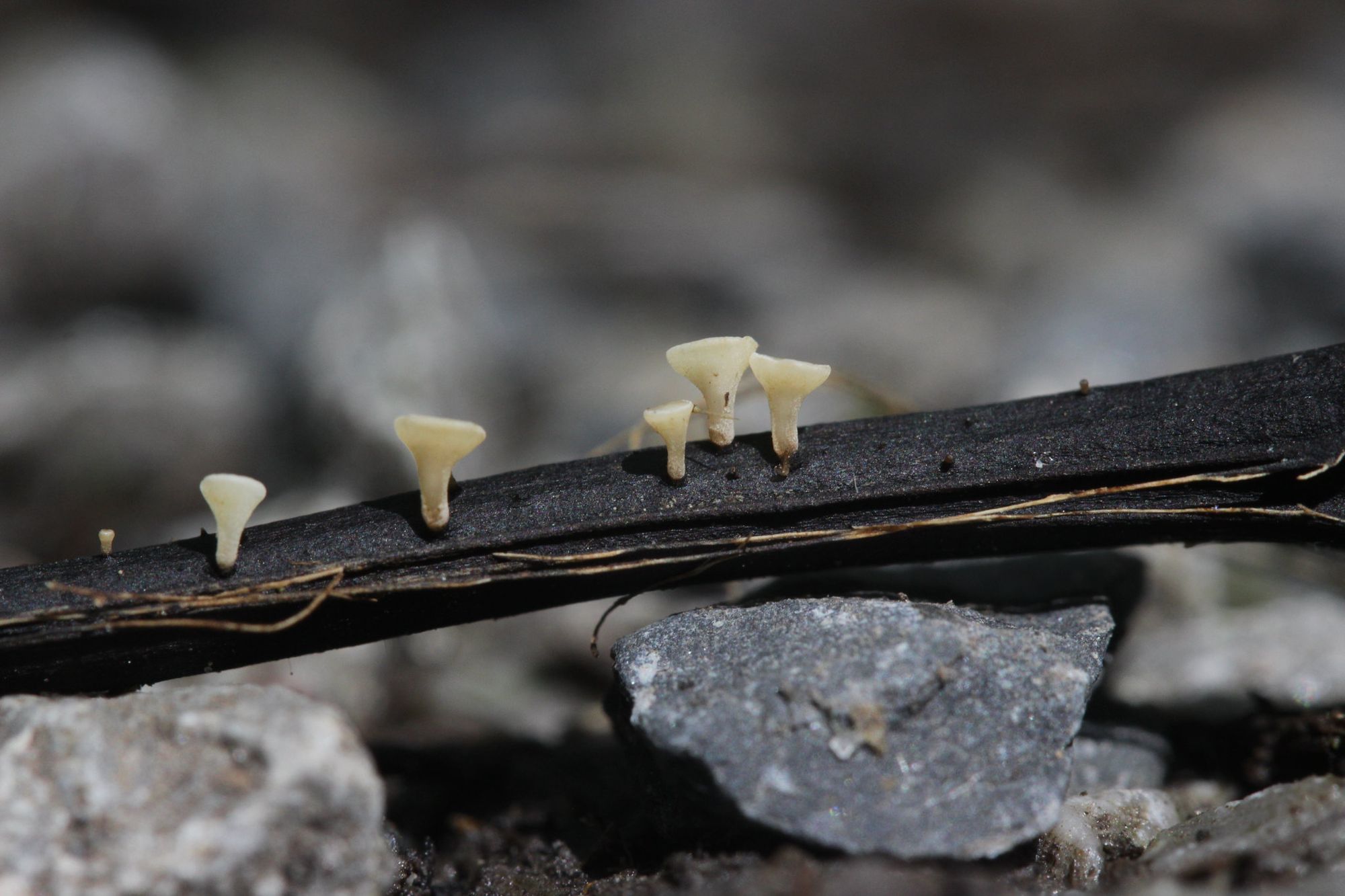
At Pound Farm, ash dieback is progressing rapidly. The Trust has limited public access to parts of the site, says Daniel Richardson, the Woodland Trust’s site manager for central England. “There are genuine safety concerns,” he says. “We are past the tipping point, and wouldn’t encourage contractors to go in there.”
Infected trees present a very real danger to people, and it is often not possible to tell from its exterior how far the fungus has spread beneath a tree’s bark. At Pound Farm, the Trust cordoned off the hazardous area and let nature reclaim the trees, but in places where trees could fall on schools or roads, authorities have to remove them and decide what to do with the deadwood.
A surprising silver lining
When elm trees are infected with Dutch Elm disease, they need to be cut down and their wood burnt as quickly as possible, advises Forestry Research, an agency of the Forestry Commission. Since there is no cure, such speedy action can slow the spread of the disease.
But with ash trees, the situation is different. The nature of the disease means that there’s no need to whisk away the skeletons. Rather, the remains of the stricken trees offer a “great opportunity” to recreate a lost component of the landscape, says Lynne Boddy, a professor of fungal ecology at the University of Cardiff. “We can still make use of these important habitats by leaving big trees that are felled or left standing.”
If left to rot naturally, deadwood offers lodgings to many different creatures. In the UK, up to a fifth of woodland species, many of which are nationally threatened, depend on dead or dying trees. For example, of the 771 scarce woodland invertebrate species listed for the UK, one in three require deadwood habitats.
As trees start dying and break apart, their limbs, bark and dead leaves fall to the ground. Fungi begin to blossom, followed by a green and brown patchwork of lichen and moss. Different slugs, bugs and beetles start to colonise the flourishing new habitat, and eventually small mammals burrow into the deadwood and litter.
If the dying trees are left standing, they effectively become apartment blocks, with different creatures occupying the various levels of its decaying trunk. Woodpeckers can open up large cavities, while insects and other creatures can move in and expand their living space. These large holes offer homes for bats to roost.
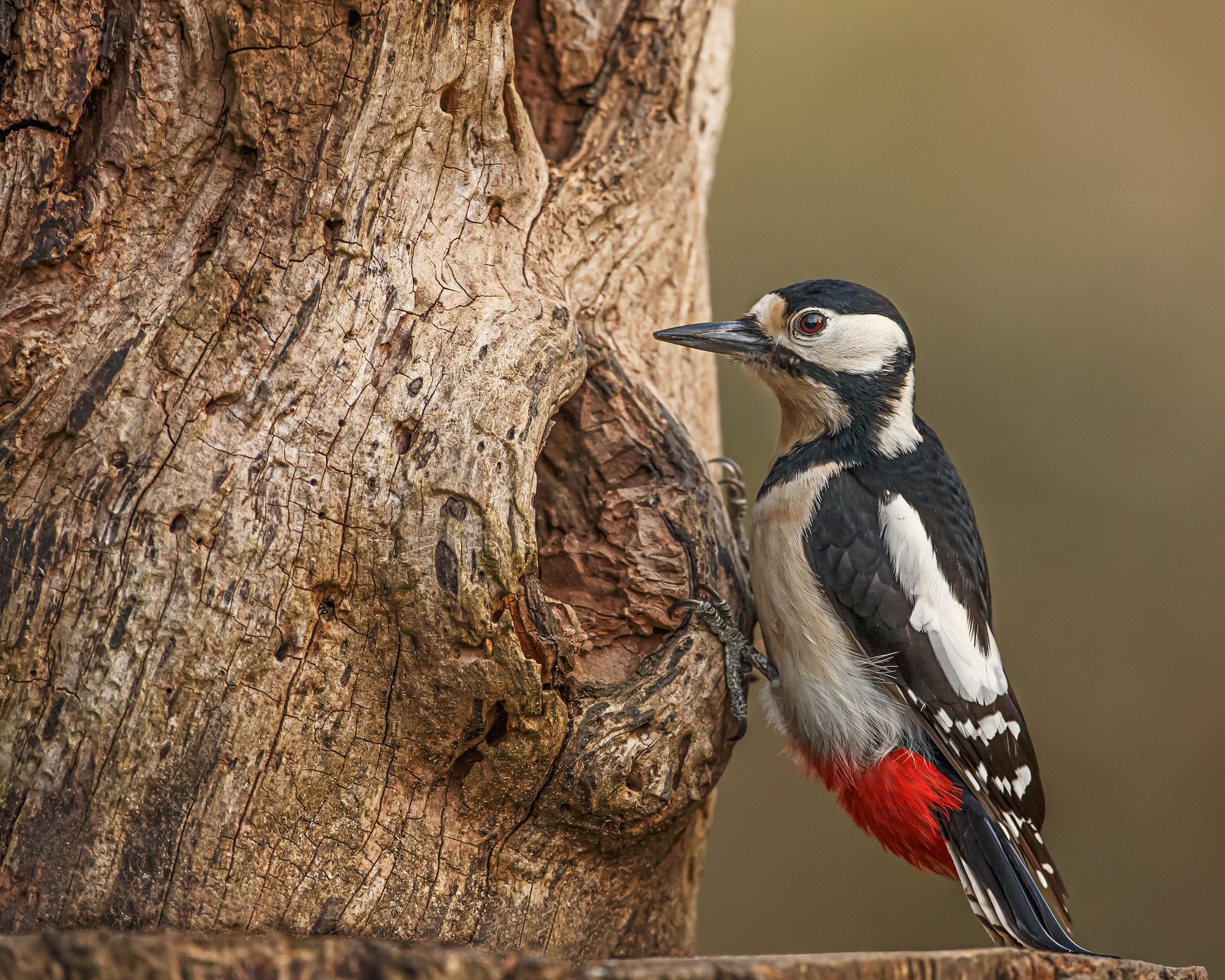
It can take decades for the deadwood to rot away entirely, and in that time it will support many generations of woodland life. Even when the tree itself has decayed beyond recognition, the decomposed matter that is left behind enriches the soil, providing nutrients and energy to the entire woodland ecosystem.
Ecological tidiness disorder
The benefits notwithstanding, there is a significant shortage of deadwood in woodlands and forests, thanks to years of clearing and “tidying” these habitats and a ubiquitous demand for firewood.
Until the turn of the century, landowners and managers removed deadwood because it was thought that dead branches and trunks could become a source of disease that could contaminate the entire woodland.
Alternatively, the deadwood found its way into people’s hearths. For millennia, people have sourced firewood from forests, and newly felled trees or piles of deadwood were often considered fair game for those in need of fuel.
Another reason was simply to keep the woods looking neat and tidy.
“The ecosystem services [deadwood provides] are absolutely massive,” says Bob Stevenson, Devon County Council’s tree officer. “But we have become a ‘tidy-away’ society where we can’t see trees just lying on their side.”
Today, whether the wood is removed or left in situ depends on the felling licence obtained from the Forestry Commission. In some cases, for example, the deadwood must be removed to allow for new trees to be planted.
DEFRA turned down all requests for an interview. But government advice on managing ash dieback states the importance of deadwood to woodland ecology and its desirability in conservation areas, while also pointing out the unnaturally low levels that exist in woodlands today. Overall, it recommends that woods have about three dead trees per hectare, either standing or on the ground.
Last year, in recognition of the fundamental function of deadwood in woodlands – although not specifically referencing ash dieback – the government published advice for landowners, encouraging them to create or maintain deadwood on their properties.
But even for conservation organisations, leaving the ash trees to decay naturally is not always practical. Last winter, the National Trust removed about 40,000 trees across its various properties – and those were simply for safety reasons rather than woodland management. “We’re not felling trees unless we have to," says senior national consultant for trees and woodland Luke Barley.
Other organisations in charge of woodlands, such as the Dorset Wildlife Trust, the Kent Wildlife Trust, the Woodland Trust, and Devon County Council, echoed these sentiments: they are only removing trees that pose a threat to people and property. Even so, they are still cutting down tens of thousands of trees.
So far, Devon’s Stevenson has helped to remove about 37,000 sick or dead trees that are in high-risk locations. “It’s heartbreaking,” he says. “I got into [this job] for the love of the trees, not to be the orchestrator of a huge removal project.”
While some of this deadwood will lie on woodland floors, creating new habitats, a lot of it will be sold to try and recoup the cost of felling.
Felling dead and dying ash trees is “hugely expensive”, says Kent Wildlife Trust’s head of land management Simon Bateman-Brown. The invisible nature of the disease means that heavy machinery is sometimes required to carry out the task safely; it is often more cost effective to divert footpaths away from unsafe areas than to actually remove the trees.
When removal becomes absolutely necessary, the felled timber is often sold to try and cover the costs. But, given the current glut of dead ash, its wood – which can be used as timber, wood chips, and firewood – does not command high prices.
The less damaged the wood, the higher the price it could possibly fetch, says the Woodland Trust’s Richardson. But trusts and those in charge of woodlands do not want to precipitously cut down infected ash because it is possible that they may fight back against the fungus and have some resistance. “It’s a big decision to make,” he says.
Resistance is not futile
The usefulness of ash as deadwood and the money it could bring in does not mitigate the catastrophe of ash dieback. The trees have special characteristics and functions that no other species can completely replace.
Ash trees produce a rich tree litter that breaks down rapidly, quickly releasing nutrients into the environment. Its airy canopy allows light to filter through the leaves down to the ground below, creating a uniquely dappled shade for bacteria, fungi, plants and animals.
More than 1,000 species are associated with ash trees, of which 44 live only on living or dead ash trees. As ash trees fall in their thousands, these species are losing their habitats. Over time, they will become rarer and, if they cannot adapt, possibly disappear entirely.
Fungal ecologist Boddy thinks that there may be more than 68 fungi associated with ash. Although there was some research on ash’s basic fungal ecology in the 1980s, the scientists did not have access to the sophisticated tools available today – which means there are plenty more mysteries to be solved, including the process of heart rot. But time is fast running out.
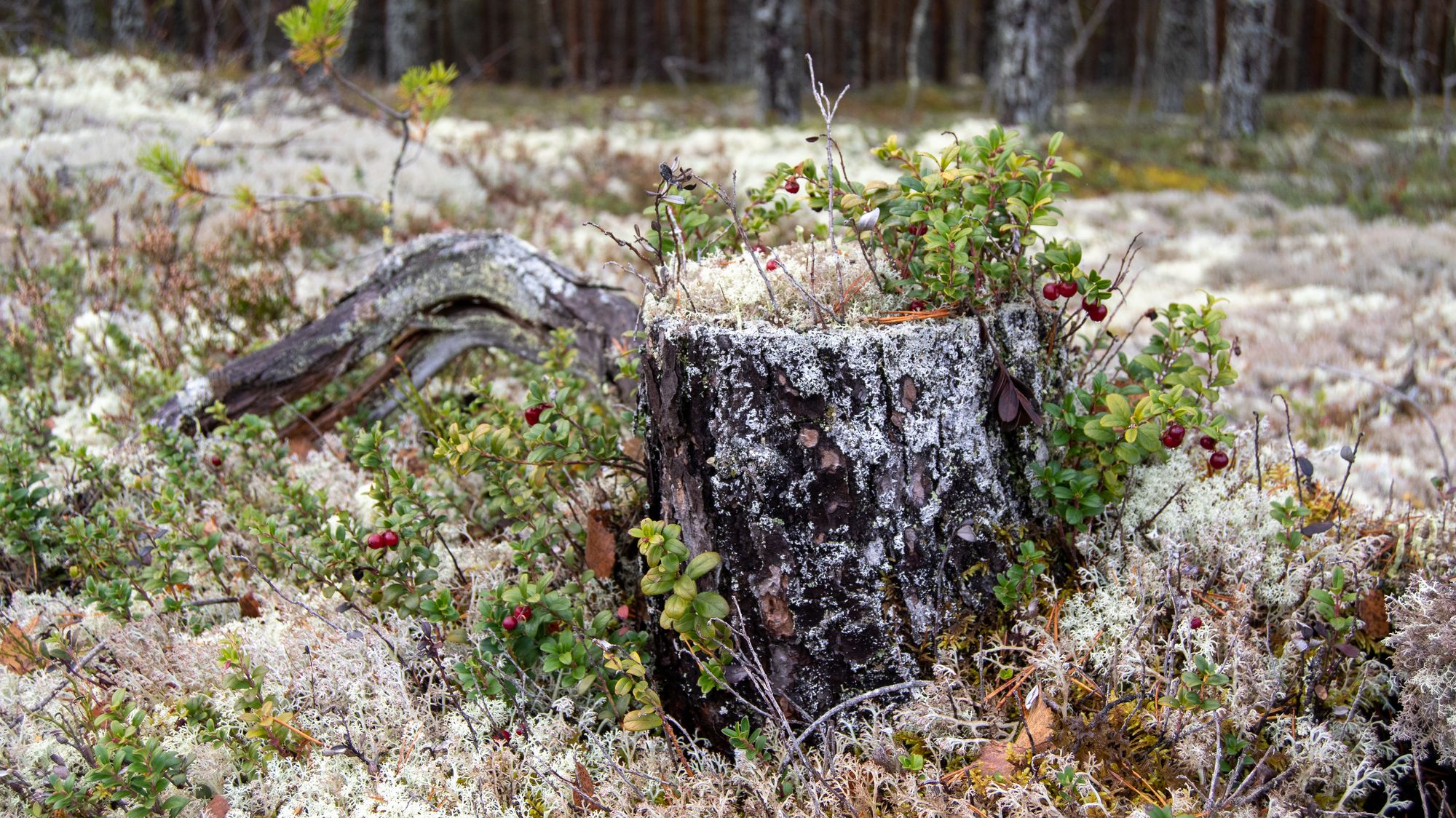
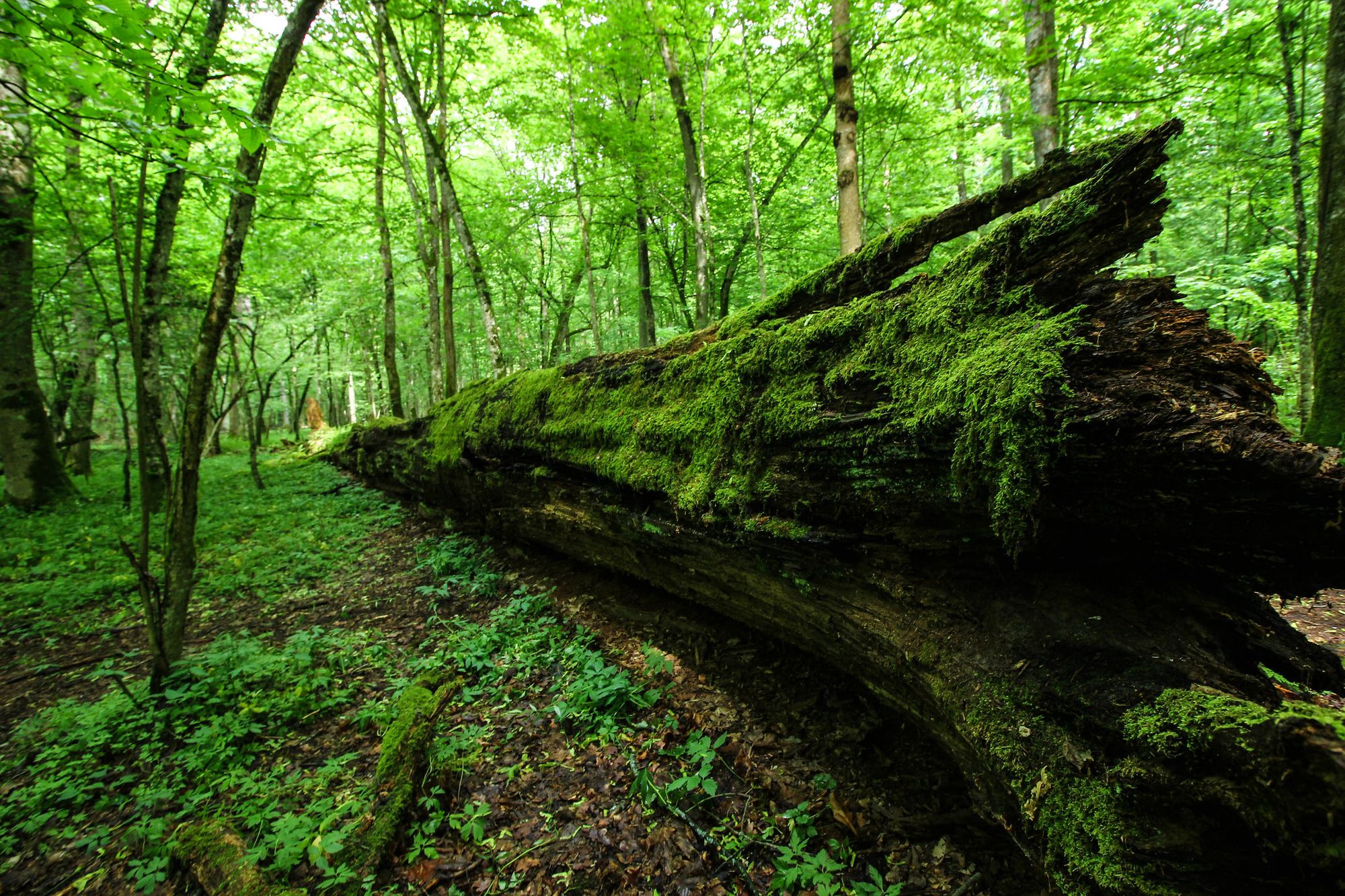
“We’re losing biodiversity before we even know that the species existed,” adds Boddy. She is now calling for urgent research into the fungal communities in living trees, as well as those that succumb to the H. fraxineus fungus. This will allow scientists to understand how long it will take ash deadwood to decay and what creatures may colonise it in the future.
But perhaps the most important reason for leaving sick – and even dying – ash trees in place is that they may contain the secrets of H. fraxineus resistance.
Not all ash trees succumb to the gnawing spread of the fungus. Some may appear to be at death’s door one season, only to bounce back the next. Anecdotal evidence points to older trees withstanding the fungus’ destruction better than saplings.
However, resistance is complicated. A 2019 paper identified genes that could confer resistance to European ash trees. Trees which are left to seed, even if they are battling the fungus’ onslaught, can pass this resistance onto their offspring. But these genes do not ensure a tree’s survival.
Other studies – such as those compiled by a government-funded consortium investigating UK ash dieback – have shown that environmental factors are also decisive in trees’ fates. A large number of H. fraxineus spores in an area can lead to multiple infections in a single tree, which can overwhelm even those with resistant genes. Wild and domestic grazing animals can strip young trees of foliage and eat saplings, curbing ash’s ability to regenerate in a woodland.
Additionally, a tree can survive the H. fraxineus infection, only to be laid low by opportunistic pests and diseases, such as the honey fungus (Armillaria). This fungus is particularly dangerous to sick ash trees: it spreads underground and attacks the root system, sprouting clumps of honey-coloured mushrooms.
But resistant ash trees that do survive – and the optimistic hope that this will be about 20%, while the more fatalistic expect about 5% to remain – will confer their tolerance onto subsequent generations. The government-funded Living Ash Project, which will run until 2024, is identifying resistant trees, and using that information to develop H. fraxineus-resistant seeds. By leaving as many symptomatic and asymptomatic ashes in the landscape as possible, it increases the chances that the species will still exist in the United Kingdom in the years to come.
So while UK forests need more deadwood, woodland custodians and the government are not in a rush to cut down ash trees – even though that could translate into a higher return for the wood.
“In a few years time, we won’t be surveying the trees that need to be taken down for safety reasons,” says Kent Wildlife Trust’s Bateman-Brown. “We’ll be surveying trees that are looking better, so we can identify trees that are resilient.”
Thank you for reading Inkcap Journal. Please consider supporting our independent environmental journalism by becoming a member. Subscribers also receive our weekly digests of nature news across Britain.
Subscribe to our newsletter
Members receive our premium weekly digest of nature news from across Britain.
Comments
Sign in or become a Inkcap Journal member to join the conversation.
Just enter your email below to get a log in link.






